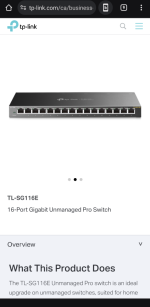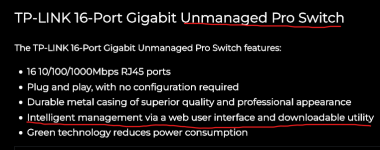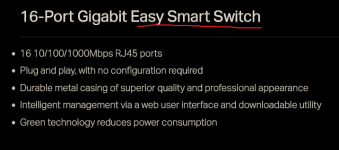I'm looking into getting a managed switch to learn how to setup VLANs. Ultimately I want to setup separate VLANs to segregate devices in the future home. Right now I only have a handful of unmanaged switches (4x TP-Link TL-SG105) handling the many wired devices and naturally everything can see everything else.
I'm just starting my research into managed switches, but I thought I'd start polling first to see if there's such a thing as a basic or beginner level managed switches versus say something you'd get from Cisco for a large corporation. Think SOHO vs Enterprise.
So far, I only know (I think) that I'll need a Layer 3 switch since I want to be setting up VLANs. I also don't want a large full rack-size unit. I'm thinking something sized similar to the Cisco SG300-10MP
I'm just starting my research into managed switches, but I thought I'd start polling first to see if there's such a thing as a basic or beginner level managed switches versus say something you'd get from Cisco for a large corporation. Think SOHO vs Enterprise.
So far, I only know (I think) that I'll need a Layer 3 switch since I want to be setting up VLANs. I also don't want a large full rack-size unit. I'm thinking something sized similar to the Cisco SG300-10MP



